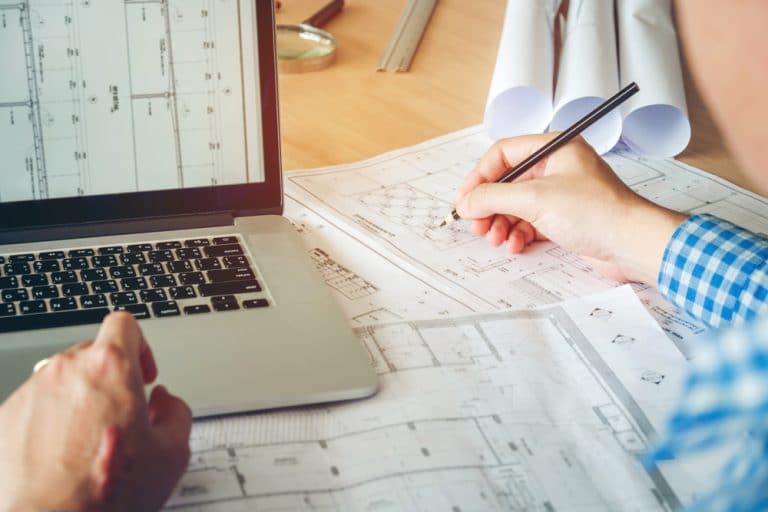Hiring Mechanical/Electrical Designers? What Are the Most Effective Interview Questions?

Interviewing Tips to Ensure the Best Hire
When interviewing designers, ensuring that you hire the correct candidate is crucial. Not only can a bad hire disrupt team dynamics, the US Department of Labor says the cost of a poor hiring decision could be as much as much as 30% of the employee’s first year earnings.
To assess an interviewing candidate for designer jobs, the questions you ask must be designed to assess the candidate for technical and cultural fit. We’ve put this brief guide together to help you design an effective interview and avoid making a costly bad hire.
Help the Candidate Relax
Most candidates are likely to be nervous when interviewing, especially if they are extremely keen to be your new Designer hire. Therefore, spend a few minutes helping the candidate to relax. Introduce your organization and the role, offer a cup of tea or coffee or a glass of water, and explain why you are eager to interview the candidate. This is a little ego boost that helps calm the candidate.
Finally, introduce the interview properly by running through the agenda, and asking if the candidate is ready to begin.
Ease the Candidate into a Question/Answer Conversation
To now, you will have done most of the talking. Now it is time to encourage the interviewee to join in the conversation. Ask a couple of initial questions that ease the candidate into the interview. You might ask about the candidate’s journey, their reasons for applying for the position, and about their current role.
Of course, you are gathering information with each question. For example:
- if the commute is likely to be an issue should you offer the candidate the job;
- the candidate’s inner motivations for joining your organization;
- and if their current duties are aligned to those that your role requires.
Learn More About the Candidate’s Ability
Having broken the ice, it is now time to start delving a little deeper into the candidate’s capabilities and skills, and start probing about their knowledge of Design simultaneously. Questions that you might ask include:
- What advantages have you found by working with the different CAD packages?
- Are there any specific techniques that you use when creating rough designs?
- How do you organize your tasks, and keep on top of your priorities?
- What’s the most challenging project you have worked on?
- Have you ever had difficulties with a colleague or manager, and how did you overcome them?
Questions like these are designed to allow the candidate to begin to build a picture of their knowledge and experience with the different CAD packages, better understand their design skills, and test soft skills such as time management, communication, and interpersonal skills.
Assess for Advanced Knowledge and Skills
Now you will want to assess the candidate’s dept of knowledge and experience. You’ll want to learn more about their technical ability, and how they could fit into your team. You might probe the technical aspects of the role first, or alternate between technical and soft skill questions. Examples of questions include:
- How do you set up a default drawing directory?
- How do you copy dimension styles from one drawing to another?
- What should you do when ‘Enter Attributes’ dialogue doesn’t display?
- Describe a method you have used to draft diagrams, specifications, and instructions to installation teams.
- What is your approach to working with other less technically adept colleagues, and how has this helped your team progress?
- Describe a technical report you composed and had to present. Describe the statistics and data you employed, and if there is anything you would have changed.
- How have you effectively explained a drawing to a production team?
Create an CAD Skills Test
Perhaps the best way to assess a candidate’s skills is to watch the candidate in action. Here are three CAD test ideas:
- Give the candidate a 10-minute task. Perhaps to create a drawing with a title frame, scale parameters, and plotting. Ask them to save as a PDF to submit the final draft. Check the result for accuracy, and asses their approach to the task by working through the command history.
- Give a drafting test to assess drafting skills and then a modelling test from a hand-drawn sketch. This will enable you to assess their capability to model designs and if they are willing to ask for clarity if something is missing from the hand-drawn sketch.
- Ask the candidate to draw a circle in the middle of a rectangle. Tell them that they can only use the circle and rectangle commands. Limit their time to 60 seconds to complete this task.
Treat All Candidates Equally
The questions above are only examples. You’ll want to devise your own, pertinent to your unique designer roles. It is important, though, that you interview all candidates equally. Only by doing so can you make a clear and informed comparison and the right choice of candidate to offer the post.
Finally, when you invite candidates to interview, if you are planning to test them, give advance warning. Those who are unwilling to take a test are either underqualified or don’t have the mentality and personality that will add value to your team.